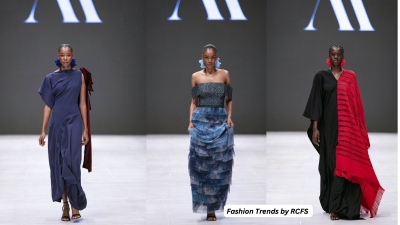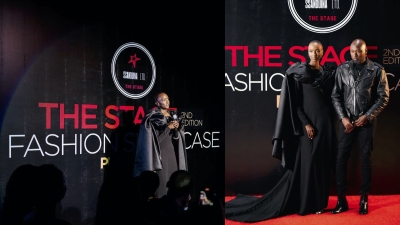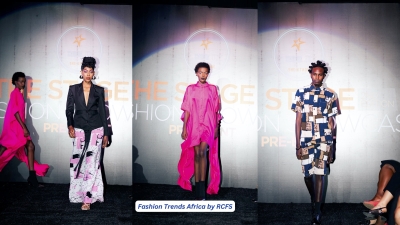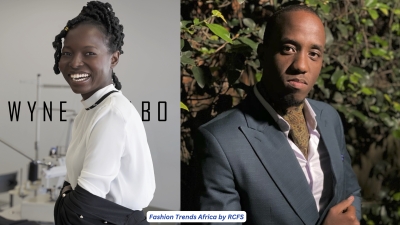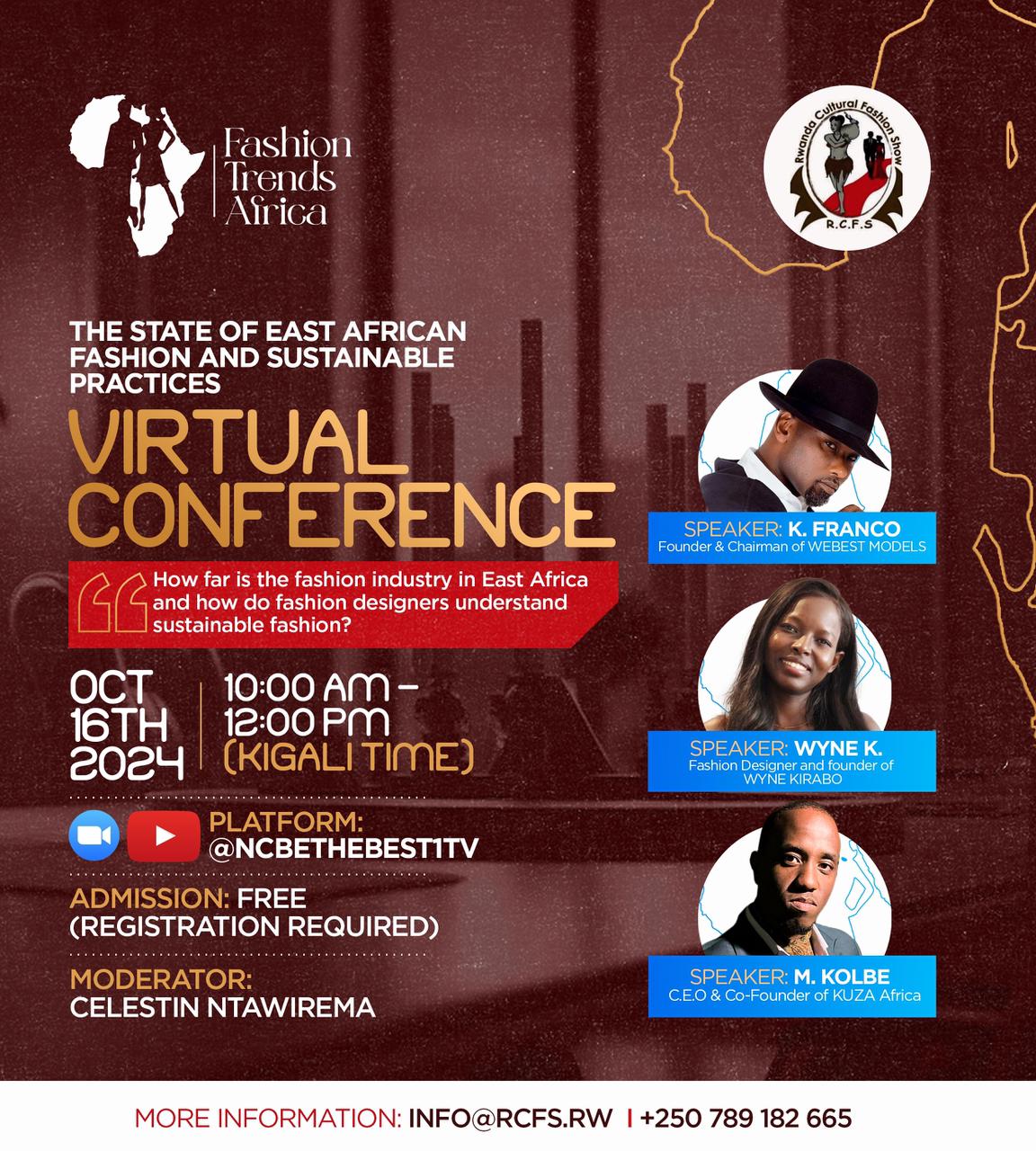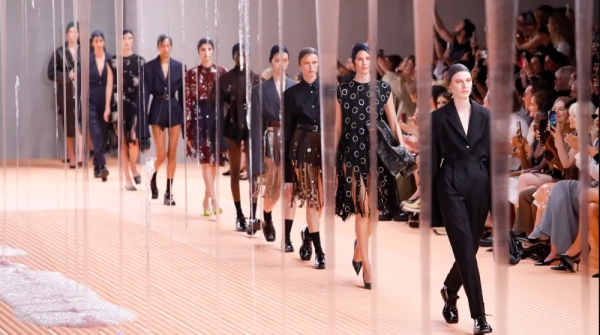 The finale of the Prada spring 2024 runway show. COURTESY OF PRADA
The finale of the Prada spring 2024 runway show. COURTESY OF PRADA
MILAN — The unveiling of three new creative directions at Italian brands will be among the key moments of the upcoming edition of Milan Fashion Week, running Feb. 20 to 26 with 161 physical and digital fashion shows, presentations and events. The schedule will include the debuts of Adrian Appiolaza at Moschino, Blumarine’s first collection under creative director Walter Chiapponi and Matteo Tamburini’s seminal collection for Tod’s.
Marni is also making a return to Milan after embracing a traveling format recently, which saw the OTB-owned brand designed by Francesco Risso touching base in Paris, Tokyo, and New York.
Other debuts will include emerging labels Sagaboi and Feben. The former was founded in 2015 by Geoff K. Cooper and is rooted in Caribbean subculture; the latter is the latest designer brand, which is London-based, supported by Dolce & Gabbana as part of the duo’s talent endorsing program that previously backed Karoline Vitto, Tomo Koizumi, Matty Bovan and Miss Sohee.
Shows will officially kick off on Feb. 21 with the likes of Iceberg and Antonio Marras. The Diesel show will follow at 12:30 p.m. CET and promises to be another buzzy affair. The brand will again embrace an open-to-the-public format, enabling 1,000 people to register for tickets and “participate” in the event from any location, it said. While the brand hasn’t disclosed further details and delayed the reveal of all information about access until Feb. 13, the company will set up a livestream starting Feb. 18 that will allow people to watch all the preparations for the event, from casting to the show’s set up.
Fendi, Del Core and Roberto Cavalli will also stage runway shows that day, which will be capped off by Etro. As reported, the brand will opt for a coed format this time, with Marco De Vincenzo unveiling his latest men’s and women’s collections at 8 p.m. CET.
Max Mara, Prada and Emporio Armani will be among the brands showing on Feb. 22, when Appiolaza’s creative tenure at Moschino will officially start at 6 p.m. CET at Museo della Permanente. The location holds a significant place in the brand’s history as the “Società per le Belle Arti ed Esposizione Permanente” hosted the exhibition “Moschino — X anni di Kaos! 1983-1993” in 1993, celebrating the first decade of the brand founded by Franco Moschino.
Appiolaza’s debut will be followed by the show of GCDS and Peter Hawkings’ sophomore collection for Tom Ford. On Feb. 23, Tamburini and Chiapponi will unveil their seminal efforts for Tod’s and Blumarine, respectively, followed by the likes of Sportmax and Philosophy di Lorenzo Serafini. At 3 p.m. CET, Sabato De Sarno’s women’s fall 2024 collection for Gucci will be revealed, followed by Marni, Sunnei, MSGM, Versace and Philipp Plein.
Ferrari, Ferragamo, Jil Sander, Missoni and Bally will all stage runway shows on Feb. 24, which will end with Matthieu Blazy presenting his new coed collection for Bottega Veneta.
Feben earmarked Feb. 25 for its Milan debut, followed by Giorgio Armani’s traditional double show at 10:30 and 11:30 a.m. CET at his storied headquarters on Via Borgonuovo. The last day will be dedicated to digital shows — including Annakiki and Laura Biagiotti — and end with the Pre Black Carpet Awards event, where guests will meet this edition’s nominees.
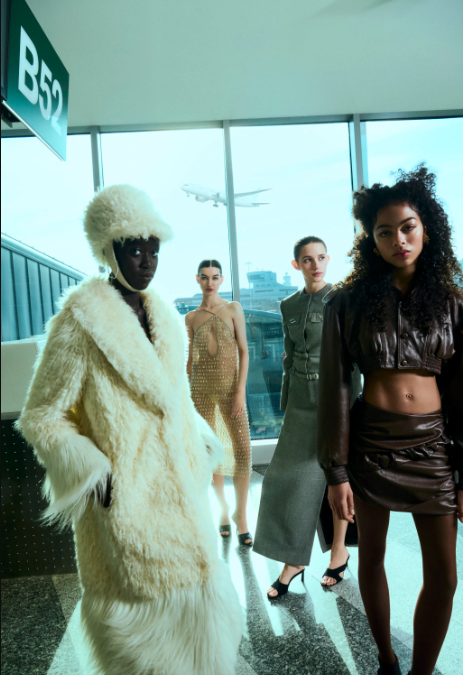 The advertising campaign for Milan Fashion Week in February. COURTESY OF CNMI
The advertising campaign for Milan Fashion Week in February. COURTESY OF CNMI
On the presentations’ front, Max Mara Group will unveil a trifecta of collaborations for three labels under its umbrella, showcasing the tie-up between Max & Co. and Richard Quinn, the Marina Rinaldi by Zuhair Murad collection and the Weekend Max Mara by Lucy Hale line.
These will add to the presentations of Brunello Cucinelli, Loro Piana, La DoubleJ, Fiorucci and MCM, alongside accessories labels such as Bulgari, Sergio Rossi, Jimmy Choo, Gianvito Rossi, Borsalino and Mach & Mach, to name a few.
New names embracing this format will also include emerging brands Cosy Sunday, Jarlzhang, Maison Jajia, Raisa Vanessa, in addition to Khrisjoy, as reported. While Act N.1 also switched from a runway show to a presentation, other young names that have been fueling the Milanese fashion scene in the past few editions are still missing from the schedule at the moment, including Cormio and Andreadamo.
“There are personal preferences impacting these choices,” said Carlo Capasa, the Italian fashion chamber’s chairman. He underscored that some brands opt for staging runway shows once a year and might return in September, mentioning the likes of The Attico and Boss.
The inaugural day of Milan Fashion Week will be reserved to a series of press conferences, including for the second edition of “Maestri d’Eccellenza,” the project dedicated to local master artisans launched by Fendi and its parent LVMH Moët Hennessy Louis Vuitton last year. This time the initiative will tie-up with Loro Piana.
Other projects to be unveiled that day will include the new cultural spaces Galleria and Project Room at 10 Corso Como, as well as the presentation of the exhibition dedicated to Walter Albini to be staged at the Museo del Tessuto di Prato Museum in Tuscany.
Additional events to circle in red on the calendar are Palm Angels’ “Son of a Beat” project — offering three clubbing nights with a curated lineup of international DJs during fashion week — and Juergen Teller’s book signing on Feb. 24, part of his photo exhibition “I need to live” just opened at Triennale Milano and running through April.
 The advertising campaign for Milan Fashion Week in February. COURTESY OF CNMI
The advertising campaign for Milan Fashion Week in February. COURTESY OF CNMI
In light of the busy schedule, Capasa addressed questions about the recurring choice of show venues that are far from each other and the consequent impact that generates on the city’s traffic and environmental sustainability. Capasa pointed to an attitude that informs “fashion at large and on a global scale,” underscoring that this is not only a problem relating to Milan alone, but is shared also in Paris or globally when brands stage their cruise shows in locations around the world.
“There’s this tendency by companies to favor certain locations to narrate their story…and give priority to the experience rather to the methods of implementations. It’s certainly something we need to reason on and understand if we can find better ways, but at a global level,” said Capasa.
He also addressed the need of adding more days to the Milan calendar
To this end, Capasa highlighted the more favorable timing the fashion events in New York and Paris have, since these cities open and close the fashion marathon and have the opportunity to stretch the respective days, while London and Milan have less margin for change.
“I believe we need an extra day and we’ve already discussed this with our global partners from the other fashion weeks,” said Capasa. “I’ve requested Tuesday to become a full day of shows here. It works better compared to the following Monday, because if we consider that the likes of Dior and Saint Laurent show on Tuesday in Paris, we won’t even have the models in town, as they would need to fly to Paris for castings.”
An extra day will further boost Milan’s economy. The local municipality estimates that the upcoming Milan Fashion Week will generate more than 70 million euros in sales across restaurants, transportation, hotels and other services, marking a 10 percent increase versus the same edition last year and a 22 percent growth compared to 2019.
It also estimates that 65,000 foreign tourists will arrive in Milan and will spend more than 1,000 euros each on average during that week. This will have a beneficial effect on small businesses and stores, expected to generate a 10 percent increase in sales during those days.
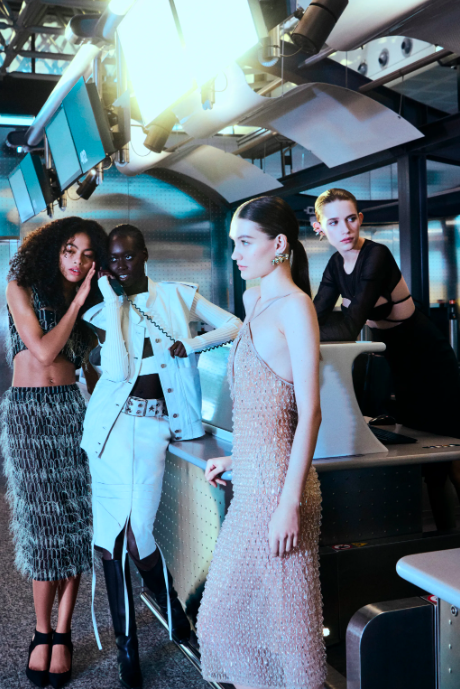
The advertising campaign for Milan Fashion Week in February.
As for the state of the fashion business in 2023, Capasa updated the projections shared in December. Sales of the fashion and connected industries (including textiles, clothing, leather goods, footwear, jewelry, eyewear and cosmetics) are expected to grow 4 percent to 102.8 billion euros compared to the previous year. In 2022 sales of the overall sector grew 20.8 percent to 98.8 billion euros versus 2021, when the total turnover also increased more than 20 percent.
As for exports, in the first 10 months of 2023 they continued to be a key driver for the industry, increasing 4.1 percent, split in 1 percent growth in the core sectors — textiles, clothing, leather goods, footwear — and 13.7 percent in the jewelry, eyewear and cosmetics categories, compared to the same period in 2022.
According to projections, exports of the overall sector are expected to grow 4.2 percent to 89.9 billion euros in 2023, compared to 2022.
Latest from RCFS
- 9 Years Milestone: Moses Turahirwa and His Moshions Brand Rwanda-Based
- 9 Years Milestone: Moses Turahirwa and His Moshions Brand Rwanda-Based
- What to Expect in Lagos Heineken Fashion Week 2024: Runways Kick off Today
- What to Expect in Lagos Heineken Fashion Week 2024: Runways Kick off Today
- Storytelling Meets High Fashion at The Kenya Fashion Story 2024




